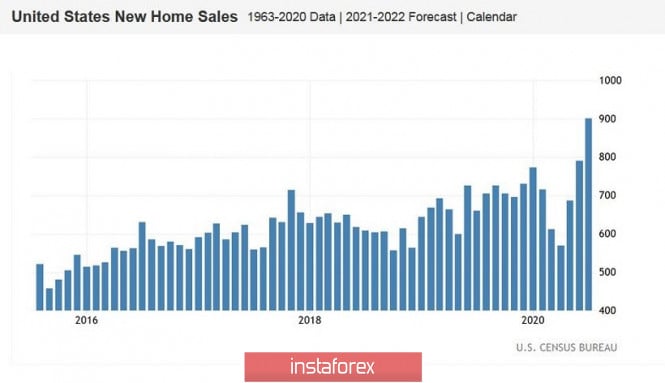The dollar-euro pair is caught in the grip of a contradictory fundamental background. EUR/USD bears are not able to gain a foothold in the area of the 17th figure, while bulls can't even test the nearest resistance level of 1.1860 (the Tenkan-sen line on the daily chart). As a result, the pair fluctuates within the 100-point price range, reacting to secondary fundamental factors.

I would like to note that political passions have calmed down today. It is worth recalling that the economic calendar for the EUR/USD pair was completely empty yesterday, so the focus was on political and near-market factors. In particular, traders tracked the Republican party's pre-election convention, which resulted in Donald Trump being confirmed as a presidential candidate. The market ignored this news (as it was known a few months ago), but Trump's rhetoric alarmed investors. He again turned on China, claiming that if re-elected, he would continue the process of imposing duties on goods from other countries. And first of all, this concerns China, since according to the American leader, the United States "lose hundreds of billions of dollars and get nothing from Beijing."
This rhetoric puts pressure on the greenback, but later it became known that despite Trump's statements, his key officials (in particular, the US trade representative and the finance minister) continue to maintain very friendly contacts with the Chinese Ministry of Commerce. This was evidenced by yesterday's telephone conversation between Robert Lighthizer, Stephen Mnuchin and Liu He. In other words, the news flow regarding the prospects for US-China relations is extremely contradictory, due to the presidential election race in the United States.
Therefore, EUR/USD traders focused on the current macroeconomic reports. The German indicator of business environment conditions from IFO was published during the European session. This indicator is a good addition to the published PMI report. Let me remind you that last Friday's German figures showed contradictory dynamics: the Manufacturing PMI index rose to 53 points (an annual high), but in the service sector it slowed down to 50.8 points, while a significant increase to 55 points was expected. The pan-European PMI indices followed the trajectory of the French indicators, which came out much worse than predicted values. In the manufacturing sector, the indicator slowed down to 51 points (after an increase of almost 53 points), while in the service sector it reached 50.1 points.

As you can see, the fundamental picture for the EUR/USD pair is contradictory. This explains the flat within a wide price range of 1.1720-1.1860 (lower Bollinger Bands line and Tenkan-sen line on the daily chart). Neither bears nor bulls dare to leave this price band, especially on the eve of the Economic Symposium, which will begin its work in the US city of Jackson Hole this Thursday. The Federal Reserve chairman and other chiefs of the central banks of the leading countries of the world are expected to give a speech within the framework of this forum. This is the most important event for the foreign exchange market, on the eve of which traders hesitate to open large positions.
Technically speaking, the situation has not changed since yesterday. With a "smooth" (not impulsive) approach to the upper border of the above price band, one can consider selling to the lower level of the range. And vice versa - you can look for entry points to the level of 1.1800 (the middle line of the Bollinger Bands on the daily chart) and 1.1860 (the Tenkan-sen line on the same timeframe) from the bottom of the 17th figure.
The material has been provided by InstaForex Company - www.instaforex.com














 Download NOW!
Download NOW!
No comments:
Post a Comment